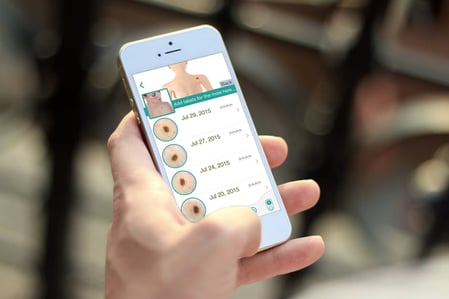1-https://onlinelibrary.wiley.com
2-https://www.theglobeandmail.com
3-http://www.pewinternet.org
4-https://www.ncbi.nlm.nih.gov
5-https://www.ncbi.nlm.nih.gov
Success Or Failure: Where Is Teledermatology Set To Stand? - Part 1
Teledermatology has become one of the fastest growing fields within telemedicine for its advantages of servicing a wide prospect of patients. Part I of this article will discuss teledermatology’s brief history alongside its current uses and challenges in the health industry.
Part II will then illustrate how some nations have successfully applied teledermatology services to overcome implementation barriers. Building on this concept, the article will then discuss why similar approaches could render a wider acquisition of this technique in order to exploit its full potential and further promote its adoption.
The Emergence of Teledermatology
In the 1990s when computers, the Internet, and telecommunication started to grow, telemedicine began to take shape and was expected to shift the health industry towards greater efficiency and improved patient care.1 Among the health disciplines that telemedicine could revolutionize, perhaps the most noteworthy was - and still is - dermatology due to its observable nature, contrary to more intricate medical professions.
As communication technologies continued its rapid growth into the 21st century, mobile devices began to enable a greater level of remote care.1 This sparked a trend of wireless and portable devices that could be used to enable consultation beyond the traditional in-clinic approach, further boosting the growth of teledermatology.
Currently, the health industry is overloaded with patients seeking quality medical care.2 Seeing as over 75% of U.S. citizens have access to a smartphone, it follows that this technology can be utilized for patients to generate and communicate valuable information with their physician.3 By combining the connective power of telecommunication with dermatology care, teledermatology services hold the potential to be implemented around the globe. The introduction of intelligent dermatology software such as DermEngine has provided two alternative consultation methods to the traditional face-to-face consultations: live-interactive and store-and-forward.
- In the live-interactive (LI) approach, the consultation takes place over live video conference. This feature enables a direct patient-dermatologist interaction which may include clarifying questions and/or specific treatment instructions, which is particularly useful for patients located in remote areas or those with restricted access to in-clinic consultations.4
- Store-and-forward (SAF) teledermatology involves sending and receiving images online for the analysis and diagnosis of skin conditions. Using SAF, dermatologists may access a patient’s data file at their convenience and provide an accurate diagnosis while bypassing the usual waiting times associated with physical consultations. The consistency and high quality of SAF is based on the analysis of dermoscopic images, which can be obtained by the patient through the use of a mobile dermoscope such as MoleScope, and then submitted to their medical professional (with this practice being identified as teledermoscopy).
Both of these solutions have proven to be low-cost alternatives to reduce patient wait times, and extend dermatological assistance in urban and rural areas - even on a large scale.4
Challenges of Large Scale Teledermatology Implementation in the U.S.
Overriding massive wait times is surely an attractive proposition for dermatology practices across the globe. Despite major efforts, the United States has yet to implement a nationwide teledermatology program owing to various technical and operational barriers.
Due to the fact that medical policies vary from state to state,5 the government has faced great obstacles in establishing standardized regulatory guidelines and crucial implementation factors such as security, privacy, legal implications, and reimbursement methods. Undoubtedly, the most challenging barrier to overcome is reimbursement policies, specifically, outlining consistencies towards whom such reimbursements should be addressed to and instituting standardized fees.
Interestingly, many states reimburse LI teledermatology while they leave SAF uncovered, even though the prior has been found to be more costly, and the latter to be just as reliable.5 The increase in cost using LI rests in the requirement of having both the referring and consulting physicians to be present in the teleconsultation, making the use of high quality teleconferencing equipment imperative.5 It’s clear that sustainable teledermatology reimbursement policies require further development in the U.S. healthcare system. As a result, new initiatives may come from frameworks which have proven successful in different parts of the world.
Final Thoughts
The growth of communication technology over the last 30 years has brought tremendous opportunities for dermatologists and patients alike to capitalize on efficient healthcare practices. However, whether choosing LI or SAF consultations, in many regions, serious technical, legal, and reimbursement obstacles still prevent teledermatology’s full adoption. The success of U.S.-based teledermatology holds the potential to drastically improve based on positive developments of the services in other countries around the world. In order to better understand this prospect, Part II of this article will explore what factors should be addressed to overcome current implementation barriers and further promote the use of teledermatology.
-The MetaOptima Team
Topics: Dermatology Store And Forward Dermoscopy Digital Health Telehealth Teledermatology Telemedicine Teledermoscopy Mobile Dermoscope Dermatology EMR System







